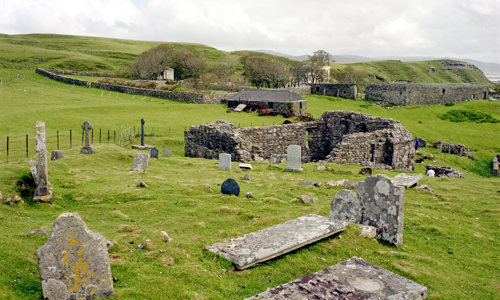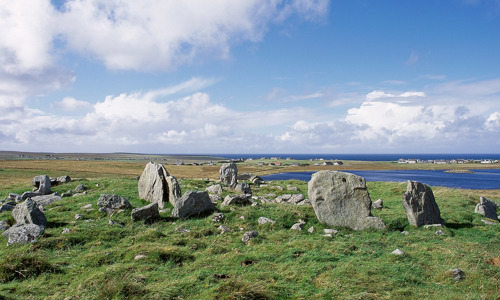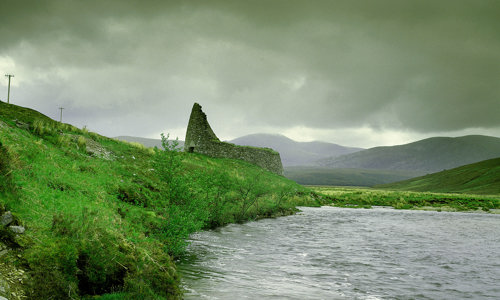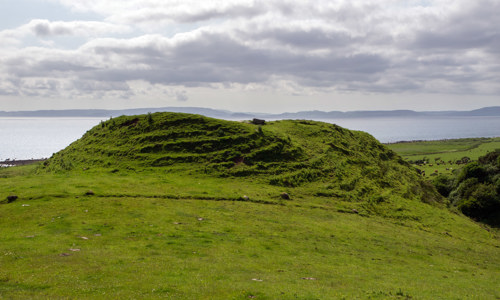History
A safe house
Dun Beag is one of the best preserved brochs in Skye and a good example of a broch tower.
Perched on a rocky hilltop, it displays a number of defensive features. The entrance is a narrow passage, and door-checks show it was once closed by a timber door. Once inside, there are very few breaks in the strong, tall dry stone walls. One opening, at ground level, leads to a small chamber – possibly a guardroom. Another leads to a narrow stone stair, of which 20 steps still survive, with another possible guard cell at the entrance.
We don’t know how tall the broch was when it was first built, but from looking at other, more complete brochs like Dun Telve and Dun Troddan, a height of about 10m seems likely.
It would have been an imposing feature in the landscape. But while broch towers had some defensive qualities, it is most likely they were built to reflect the status of their inhabitants.
A very long occupation
Scotland’s brochs were built in the Iron Age, first emerging about 2,300 years ago. Residential use continued at some until the middle of the first millennium AD.
However, excavations at Dun Beag suggest it was occupied – or at least visited – much later than that. Medieval and later coins were found at the broch in the 1910s, though no firm conclusions can be drawn from this.
Uniquely Scottish
Brochs only appear in Scotland. They are dry stone structures formed of two concentric walls, with a narrow entrance passage and often small cells (or chambers) entered off the central area. Stone stairs ran between the inner and outer walls to provide access, perhaps to upper floors, and the top.
There are well over 500 brochs in Scotland, most of them found in northern and western Scotland and the islands.















